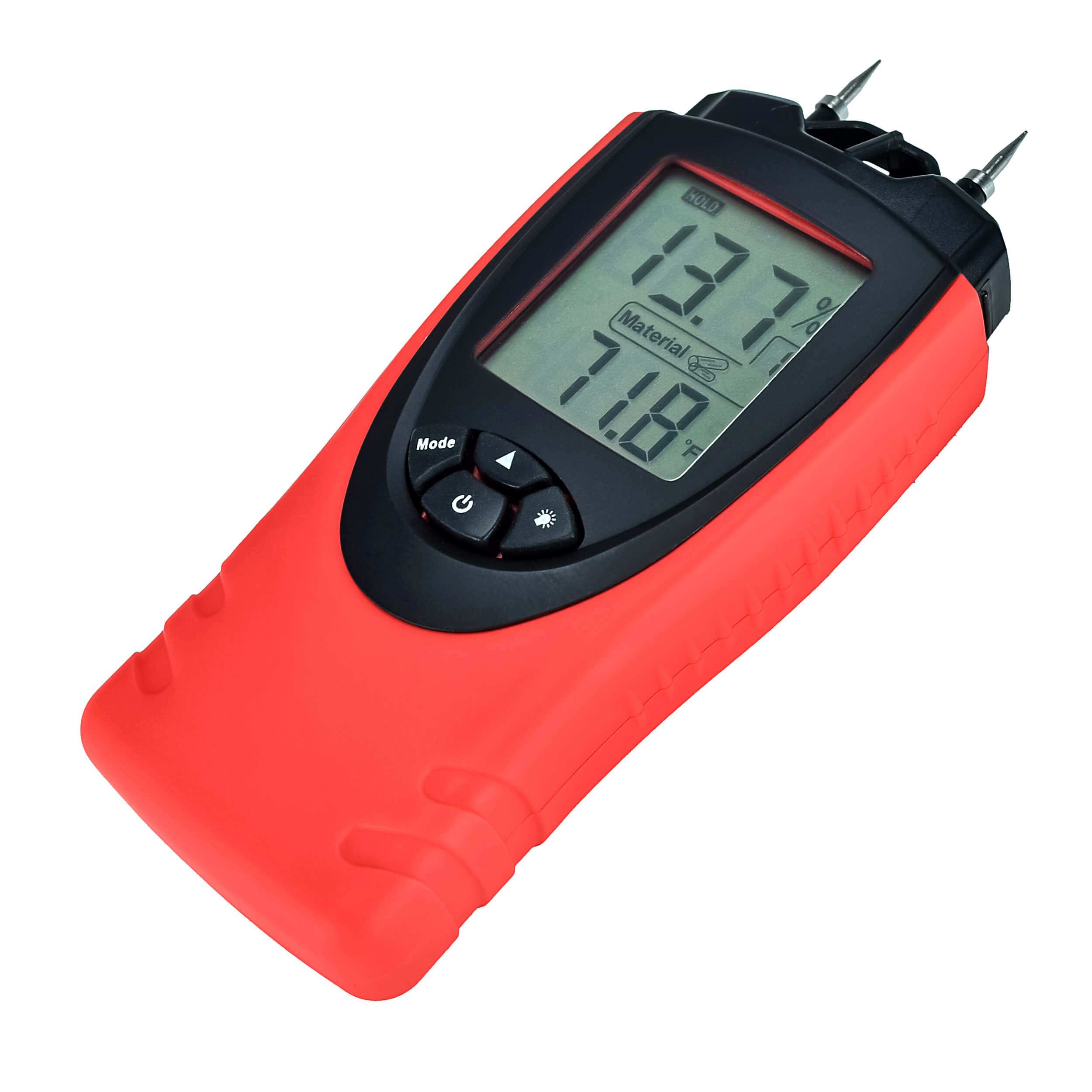How a Moisture Meter Can Enhance Your Building And Construction Projects and Protect Against Damage
How a Moisture Meter Can Enhance Your Building And Construction Projects and Protect Against Damage
Blog Article
Explore the Globe of Moisture Meters: Every Little Thing You Need to Know
In the realm of moisture meters lies a world of accuracy and practicality that frequently goes unnoticed. Recognizing exactly how moisture meters operate, the different kinds available, and their varied uses can shed light on their value in guaranteeing top quality and efficiency.
How Moisture Meters Work
Moisture meters operate by gauging the electric conductivity or capacitance of products to establish the moisture content present. These meters are very useful devices across numerous markets, including farming, woodworking, and building. By making use of different methods such as pinless or pin-type modern technology, wetness meters offer precise analyses that assist professionals make informed decisions.
Pin-type wetness meters work by placing the sharp pins into the material being examined. On the various other hand, pinless moisture meters make use of electro-magnetic signals to check a larger area without creating any kind of damages to the material's surface.
Despite the method used, moisture meters play a critical role in stopping issues such as mold development, architectural damages, or product problems triggered by excess moisture. Recognizing exactly how these meters job is necessary for guaranteeing the quality and integrity of products in numerous applications.
Kinds Of Moisture Meters
Given the critical function dampness meters play in various markets, it is vital to understand the different kinds available to professionals for precisely analyzing moisture degrees - Moisture Meter. There are largely 2 major types of wetness meters: pinless and pin-type wetness meters

On the various other hand, pinless moisture meters utilize electromagnetic sensor plates to check a larger location of the material without triggering any damage. This kind appropriates for rapidly scanning large areas and is frequently utilized for floor covering, wall surfaces, and ceilings. Pinless meters are hassle-free for taking readings on finished surfaces without leaving any type of noticeable marks.
Both sorts of wetness meters have their benefits and are selected based upon the details needs of the work at hand. Understanding the differences in between these kinds is important for specialists to make exact wetness analyses.
Applications Across Industries
Construction professionals rely on wetness meters to assess the moisture degrees in structure materials like timber, concrete, and drywall, which is essential for keeping structural integrity and avoiding problems like rot or mold and mildew. The floor covering sector utilizes moisture meters to measure the moisture content in subfloors prior to setting up different floor treatments, protecting against expensive problems due to excess dampness. In the food sector, moisture meters are made use of to monitor and regulate moisture degrees in products such as grains, nuts, and dried fruits to preserve freshness and quality.
Tips for Using Wetness Meters
When gauging the moisture web content straight from the source in numerous products,Make use of the wetness meter's calibration settings to guarantee exact readings. Calibration is vital for the appropriate functioning of a dampness meter. Before each usage, it is suggested to check and adjust the calibration setups according to the particular material being evaluated. Furthermore, make certain the meter is established Visit Website to the correct moisture array for the product you are gauging to acquire the most exact outcomes.
When using a pin-type moisture meter, put the pins to the appropriate depth recommended for the material being tested. This ensures that the dampness readings are extracted from the proper deepness within the product, providing a much more precise representation of its dampness web content. For pinless moisture meters, remember to keep appropriate contact with the material's surface to obtain trustworthy analyses.
Frequently check and replace the batteries in your wetness meter to prevent incorrect analyses as a result of low power. Shop the meter in a secure and dry location when not being used to lengthen its life expectancy and maintain its accuracy. By complying with these ideas, you can take full advantage of the performance of your moisture meter and acquire precise dampness material measurements throughout various products.
Maintenance and Calibration
To guarantee the accuracy of dampness material measurements, regular maintenance and calibration of the wetness meter are vital steps in its proper performance. Maintenance includes maintaining the wetness meter tidy and cost-free from particles that can impact its analyses. It is essential to adhere to the producer's standards for cleaning to stop damages to the tool. Additionally, normal calibration is necessary to verify the precision of the analyses. Calibration changes the moisture meter to ensure that it supplies trustworthy and constant outcomes.
Calibration should be executed you can find out more occasionally, specifically if the wetness meter is used regularly or in crucial applications where specific measurements are called for. Many dampness meters come with calibration devices or can be adjusted by professional solutions. Moisture Meter. It is advised to maintain a log of calibration days and results to track the performance of the moisture meter with time. By maintaining and adjusting the dampness meter consistently, users can rely on the accuracy of the wetness material dimensions acquired.
Final Thought

In conclusion, wetness meters play a vital function in different industries by precisely measuring the moisture material of products. Understanding how these tools function, the various types offered, and appropriate upkeep and calibration are vital for getting trusted results. Whether in agriculture, building, or production, making use of moisture meters aids make certain quality control and performance in procedures.

In final thought, moisture meters play a vital role in various industries by properly gauging the dampness content of materials.
Report this page